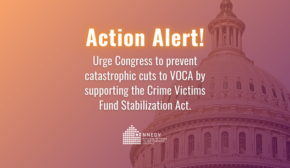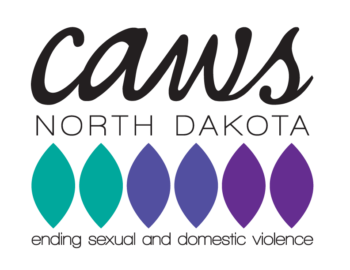Meet CAWS North Dakota
Through this regular feature, the National Network to End Domestic Violence (NNEDV) will be introducing you to our member coalitions. Read the rest of our Meet A Coalition features here.
This month, meet CAWS North Dakota:
What is it like to do domestic violence work in North Dakota?
After forming the coalition nearly 40 years ago and by listening to the voices of survivors, we created a service delivery model that focused on emergency shelter, crisis lines, safety planning, and advocacy. Since that time, there has been little critical evaluation of the model and it efficacy in today’s North Dakota. As a result, CAWS North Dakota decided to explore if this service delivery model is still meeting the needs of survivors today. We explored two key questions:
- What do domestic violence and sexual assault survivors of today need?
- In what ways could programs and services be strengthened to meet those needs?
Through the process, we found that the model was not meeting current needs of many survivors and identified five key areas that present barriers to domestic violence and sexual assault survivors realizing their goals:
- Lack of resources that support transitioning to safety
- Programs unsuccessfully bridging distance and culture
- Need for adapting advocacy around technology and the vastly different expectations of millennials
- Lack of programmatic support for survivors post separation
- Lack of advocacy models designed for non-residential populations and survivors who remain in relationship
What impact does your unique North Dakota context have on this work?
North Dakota has gone through a period of extreme stress and change over the last ten years. Currently, North Dakota’s economy is in a downturn. This is due to the reduction in global oil prices, a corresponding reduction in energy related employment, public policy decisions to cut oil extraction tax rates, and consequently, significantly reduced state revenues. After years of unprecedented growth in response to an expanding economy, North Dakota’s population has remained relatively unchanged from 2015 to 2016, with a 0.1% increase, reaching an all-time high of 757,952 residents in 2016 living within 53 counties across 68,796 miles. From 2010 to 2015, the population of persons of color in North Dakota grew at a higher pace than the U.S. (45.4% growth in North Dakota as compared to 10.8% growth in the U.S.). North Dakota was one of few states with a decrease in median age in the past five years and the only state that continued to grow younger in 2015. The recent population growth in the state has not been gender balanced, North Dakota being one of few states where males outnumber females. North Dakota’s counties experienced differential population change.
What are the biggest barriers that survivors face in North Dakota?
In addition to a severe lack of affordable housing programs, struggle to meet the legal needs of victims due to lack of attorneys willing to provide pro bono or reduced fee legal services in contested protection order or divorce and custody cases. Cash or financial assistance services are also in high demand as a significant amount of victims move to North Dakota with their abusers looking for work and struggle to find ways to return home.
“The demand for services remains steady. The need for safe, accessible emergency and long-term shelter and housing for victims and their children has and will continue to be our priority,” shared CAWS North Dakota Executive Director Janelle Moos. “Without that, many victims are left with two choices homelessness or staying in the violent relationship.”
What’s happening in North Dakota that your excited about?
CAWS North Dakota has led the development of anti-trafficking work for the last three years. It has fostered significant growth in this area. While CAWS, through FUSE (a Force to End hUman Sexual Exploitation), has been able to marshal resources and lead policy advocacy, it relies on strong partnerships with direct service agencies in order to carry out service delivery to victims of trafficking. Assisting those agencies with accessing funding to do the work has created a strong relationship with these organizations, and has developed co-visioned strategy and leadership. CAWS and FUSE, in order to be successful, must continue to prioritize and build these partnerships.
At the height of the oil boom (or energy development) we partnered with Men Can Stop Rape (MCSR) to create a campaign aimed at preventing violence and promoting bystander behavior entitled “Where do you Stand” that included images and messages of men working in the industry as well as a “general” men’s campaign. From there we expanded our partnership with MCSR to include a focus on the Young Men of Strength (YMOST) campaign and develop an app specific to ND called ASK ND.
Are there any champions in North Dakota that you’d like to thank or celebrate for their record or work on domestic violence?
We have a significant number of champions—our programs, legislators, leaders in state government, allied non-profits, and community members throughout North Dakota. We couldn’t do our work without them.
How is your coalition working to end domestic violence?
The four core tenets of our work at the coalition are:
- Offering accessible, survivor centered services
- Developing community based solutions to respond to and prevent domestic and sexual violence
- Providing diverse and sustainable resources for services
- Maintaining a unified, consistent message promoting safety for victims and nonviolent relationships
If your coalition was a musician or music group, who would you be and why?
This was a challenging question for our coalition but one of our staff selected The Rolling Stones. Why? Well, we are in a place as a coalition where we are struggling with our relevance and the impact of our work, especially with millennials. So, our question is do we continue to find a way to make The Rolling Stones (our message about domestic violence) relevant to that generation or do we change the name of our band, station, or music (with an updated or different message)?
Is there anything else you’d like to add?
CAWS North Dakota is celebrating its 40th anniversary as a coalition in 2018. CAWS North Dakota has a longstanding and well-respected history for building partnerships, providing training, developing resources and tools, and advocating for state and federal public policy. CAWS North Dakota has fostered the development of critical partnerships to address other aspects in the lives of victims and communities by serving as the umbrella organization for the North Dakota Women’s Network and the First Nations Women’s Alliance (tribal domestic violence & sexual assault coalition).
In addition, internal efforts have also included organizing the first Survivor’s Group, Life After Fear (LAF) and a group of domestic violence and sexual assault homicide victims’ family and friends called “Living On.” The coalition also facilitates the state’s only “Batterers’ Intervention Forum” of public and private providers, and has awarded scholarships to low income women pursing higher education in North Dakota for 30 years at around $10,000 each year through its Women’s Opportunity Scholarship Project.
Learn more about CAWS North Dakota:
Website: cawsnorthdakota.org
Facebook: www.facebook.com/cawsnorthdakota
Twitter: www.twitter.com/cawsnorthdakota











